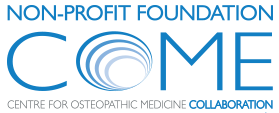Chronic Inflammatory Disease and Osteopathy: A Systematic Review.
Background: Chronic inflammatory diseases (CID) are globally highly prevalent and characterized by severe pathological medical conditions. Several trials were conducted aiming at measuring the effects of manipulative therapies on patients affected by CID. The purpose of this review was to explore the extent to which osteopathic manipulative treatment (OMT) can be benefi-cial in medical conditions also classified as CID.
Methods: This review included any type of experimental study which enrolled sub-jects with CID comparing OMT with any type of control procedure. The search was conducted on eight databases in January 2014 using a pragmatic literature search approach. Two independent re-viewers conducted study selection and data extraction for each study. The risk of bias was evaluated according to the Cochrane methods. Heterogeneity was assessed and meta-analysis performed where possible.
Results: 10 studies met the inclusion criteria for this review enrolling 386 subjects. The search identified six RCTs, one laboratory study, one cross-over pilot studies, one observation-al study and one case control pilot study. Results suggest a potential effect of osteopathic medicine on patients with medical pathologies associated with CID (in particular Chronic Obstructive Pul-monary Disease (COPD), Irritable Bowel Syndrome, Asthma and Peripheral Arterial Disease) com-pared to no treatment or sham therapy although data remain elusive. Moreover one study showed possible effects on arthritis rat model. Meta-analysis was performed for COPD studies only show-ing no effect of any type of OMT applied versus control. No major side effects were reported by those receiving OMT.
Conclusion: The present systematic review showed inconsistent data on the effect of OMT in the treatment of medical conditions potentially associated with CID, however the OMT appears to be a safe approach. Further more robust trials are needed to determine the direction and magnitude of the effect of OMT and to generalize favorable results.







